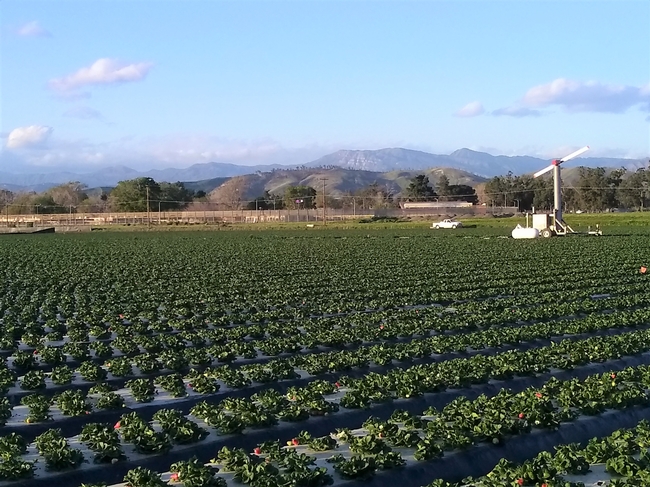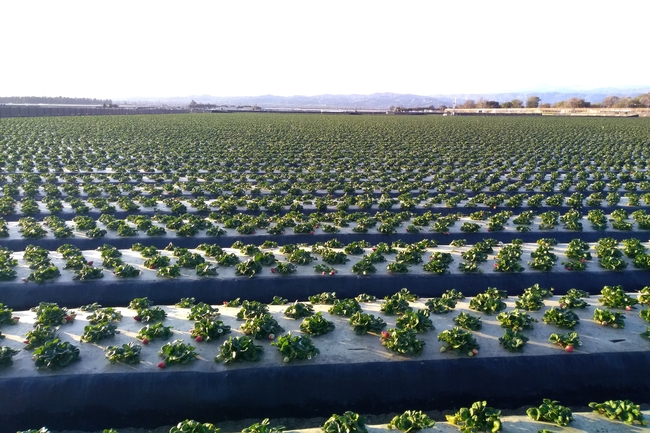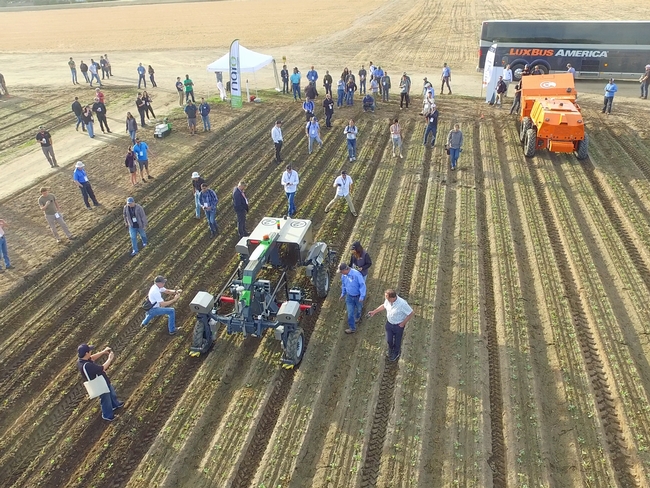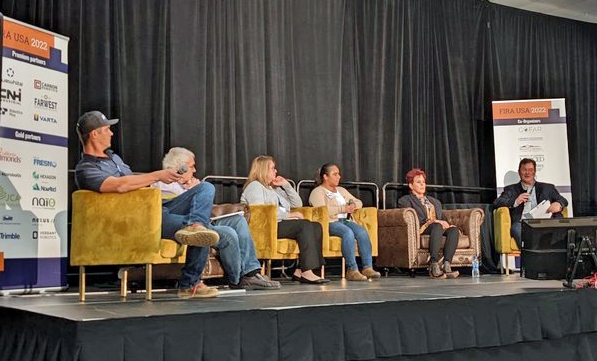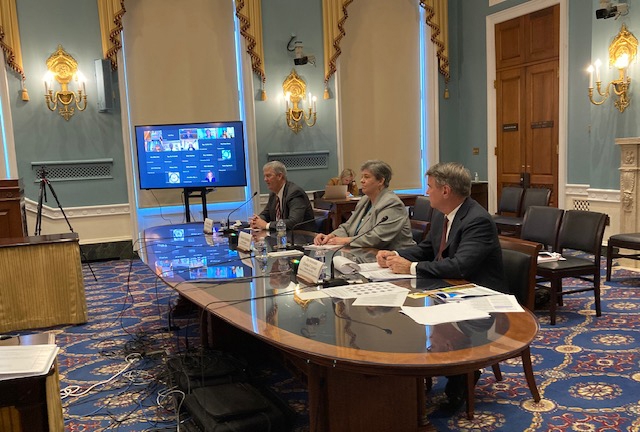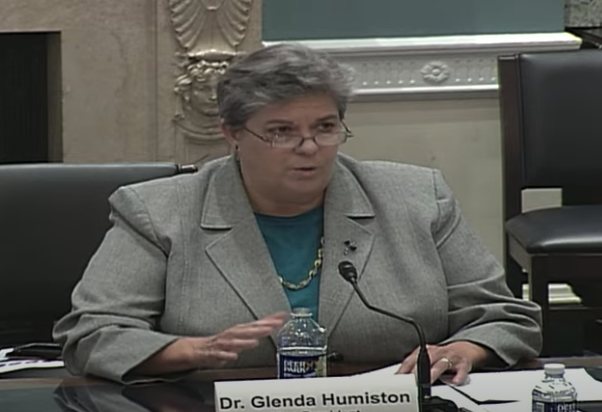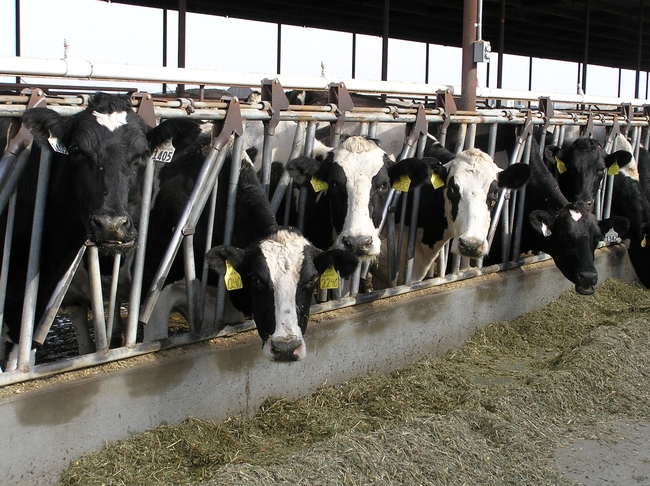
Posts Tagged: Glenda Humiston
Agricultural research and education center moving to new site in Ventura County
UC Hansen Research and Extension Center to expand capacity at Camarillo location
The University of California Hansen Agricultural Research and Extension Center – the site of popular school field trips, 4-H programs, a UC Master Gardener demonstration garden, and numerous research trials on crops and landscape plants – is moving to a new location on the west side of Camarillo. The center was established through an endowment bequeathed to the UC by Saticoy farmer Thelma Hansen, who sought to support university research and extension activities benefiting Ventura County.
For the past 25 years, Hansen REC has been located on the historic Faulkner Farm in Santa Paula. At 27 acres, Hansen REC was the smallest of the nine RECs across the state operated by UC Agriculture and Natural Resources; in 2019, UC ANR leadership decided a larger property was needed to expand the center's capacity. The Faulkner Farm was sold in March 2021, but a portion was leased back to the UC to sustain its programs until a new location was identified.
In December 2022, the UC acquired a 114-acre farm property in Camarillo to serve as Hansen REC's new home. Moving structures and equipment from Faulkner Farm will take place over the next six months. Public programs at the new location are on hold until seismic retrofitting and other building upgrades are completed. A new research and educational facility also will be built, with an estimated opening date in 2027 or 2028.
“Our planning committee looked for a site on the Oxnard Plain that is representative of the coastal agriculture environment and conducive to research on Ventura County's high-value crops, such as strawberries,” said Annemiek Schilder, Hansen REC director. “We also sought a location with diverse soil types, access to sufficient irrigation water, and a low risk of flooding – and we're pleased that this Camarillo property meets most of our search criteria.”
Of the approximately 104 cultivable acres, 28 are certified organic, which will allow researchers to study organic as well as conventional crop production methods, Schilder noted. She said another bonus of the new location is its proximity to California State University, Channel Islands and the Rodale Institute California Organic Center, which are both potential partners for future research and a student organic farm on site.
Initial plans for the new Hansen REC facility include offices, conference rooms, laboratories, greenhouses, a demonstration kitchen, and indoor and outdoor education areas. The center will aim to be water-efficient and energy-neutral, relying on solar panels for much of its energy usage. The UC Cooperative Extension Office in Ventura is also slated to move to the new facility.
“We fully expect Hansen REC to become a vibrant research and education hub that provides science-based solutions and is responsive to the needs of agricultural, rural and urban communities and the environment in Ventura County,” said Glenda Humiston, UC vice president for agriculture and natural resources. “We're excited to expand current programming while bringing in new educational opportunities, such as the UC Master Food Preserver and Master Beekeeper programs.”
First FIRA USA Ag Robotics Forum attracts people from around the world
Agriculture and the global food supply is threatened by a range of issues including drought, climate impacts, increasing business costs and labor scarcity. To forge solutions to these issues and more, nearly 1,000 attendees from 26 countries converged in Fresno on Oct. 18-22 for the inaugural FIRA - World Ag Robotics Forum to be held in the U.S. The event was co-sponsored by UC Agriculture and Natural Resources' The Verde Innovation Network for Entrepreneurship, or the VINE.
Widely observed as a pivotal moment for agricultural technology and robotics in U.S. agriculture, the event was kicked off by California Department of Food and Agriculture Secretary Karen Ross and moved into a packed agenda with panel discussions, lightning talks and pitches where automation company representatives, academics and growers had the opportunity to share their challenges, concerns and hopes for the future of autonomous farming. The event culminated at CSU Fresno with more than a dozen companies offering in-the-field demonstrations.
Although growers are the target market for most of the equipment, the benefits of automation can ripple out into society, according to Glenda Humiston, University of California vice president for agriculture and natural resources.
“Technology can help us grow, harvest and distribute food more efficiently so that it can become more affordable and accessible for those who are food insecure,” said Humiston. “If we do this right, it's good for the whole community.
Here are a few themes and takeaways from this pioneering multi-day event.
Gaining on-farm use - Focus on end-user needs and ease of use
A major question speakers tackled was why more growers aren't yet integrating automation on their farms. Automation solutions exist and are being developed to help growers in nearly every aspect of running a farm — from planting, harvesting and weeding to addressing persistent labor shortages. Despite this, ag automation companies – both big and small – still face resistance from growers to adopting new technologies.
Part of the problem, Jeff Morrison of Grimmway Farms said during a panel on mechanization versus automation, is that companies pay more attention to their product than the needs of the grower. “Farmers want technology that fills a particular need,” he said. Anna Haldewang, the founder of InsightTRAC, agreed. “Don't be married to your product, be married to your customer.”
Chuck Baresich, president of the Haggerty AgRobotics Company, emphasized the importance of creating automation solutions that are simple and intuitive to use. “For a manufacturer, the first thing I'd tell them is don't overcomplicate things,” he said. “Make sure your robot can drive straight, start with that.”
Panels also touched on the technical, business and regulatory challenges to automating agriculture. The ag tech startup market is much younger than Silicon Valley, and we don't yet know the best route to establishing a successful business, Rob Trice of Better Food Ventures and The Mixing Bowl observed during a panel on robotic product development with key industry leaders, including Walt Duflock, vice president of innovation for Western Growers. That said, panelists identified three things that startups should do:
- Get prototypes into the field as quickly as possible to get performance data and get feedback, including from farmworkers, who may come up with multiple uses for the product.
- Be transparent about development to build partnerships with investors and growers. Partners understand that startups are a work-in-progress.
- Be ready to evolve and change your technology or your business to meet the customers' needs. Love the customer, not the tech.
AgTech, Labor and Farmworkers - Forging win-win opportunities
Labor issues also emerged as a persistent theme during the event. One of the major forces driving the need for automation in agriculture is persistent labor shortages. Simply put, farmers do not have sufficient labor to sustain their operations and are turning to agtech, robotics and automation to fill the gap. At the same time, as robotics and automation take hold in the agriculture industry, farmworkers and farm labor organizations are rightly concerned about the impact that the adoption of automation will have on agriculture jobs, in particular farm labor jobs.
Hernan Hernandez of the California Farmworker Foundation acknowledges the labor concern, but also sees opportunity. “All of a sudden, you go from 100 individuals that are going to be able to harvest this season to now 10 that will harvest with a machine," he said. "But the way we look at it is as well, when we talk to farmworkers and engage them, and we look at data, there is also opportunity. We know a lot of the farmworkers want opportunities to further their skill sets.”
We've got to find ways to help our farm workers actually get the training they need to make use of this technology, which will give them a better quality of life.
This sense of optimism about the future of the farmworker was shared by Gabe Youtsey, chief innovation officer of UC ANR, who moderated a panel on the future of agricultural work. “California as a whole has begun recognizing the importance of creating the next generation of ag workers,” he observed, “and schools and industry have both taken notice.” Indeed, California community colleges have begun working on new relevant programs that translate directly to jobs, and the federal government has allocated $10 million going directly to Central Valley agricultural education and workforce development programs.
What's next?
The gathering also served as a platform for launching new technology initiatives. Youtsey, in collaboration with our partners at UC Davis AI Institute for Food Systems, announced the 2023 Farm Robotics Challenge at FIRA USA 22! We look forward to co-hosting this event!
It is clear that automation and robotics will play an increasingly crucial role in agriculture. Not only in addressing the pronounced labor shortage in agriculture, but by creating new value creation opportunities related to resource efficiency, crop health, disease, harvesting and more.
“Our job at The VINE is to drive collaboration between industry, academia and government forward,” said Youtsey. “Robotics is moving very fast and there's a new set of players coming into the space. UC Cooperative Extension advisors can bring startups and farmers together in creative new ways during development and advance these solutions into commercialization faster.”
Co-sponsors of the conference included FIRA, Western Growers, University of California, Merced, California State University, Fresno and the Fresno-Merced Future of Food (F3) Innovation Initiative.
Industry sponsors included Bluewhite, Carbon Robotics, CNH Industrial, Far West Equipment Dealers Association, Grimmway Farms, Keithly-Williams Seeds Inc., Robotics Plus, VARTA AG, and Sonsray Machinery, LLC.
For more information
- Subscribe to the FIRA Newsletter HERE and check the website for future events.
- Interested in the 2023 Farm Robotics Challenge?Learn more at https://farmbot.ai.
Humiston touts USDA climate-smart programs before House agriculture committee
Testimony highlights UC ANR's role in advancing prosperity, sustainability and climate resilience
Glenda Humiston, Ph.D., University of California vice president of agriculture and natural resources, director of the Agricultural Experiment Station and director of the Cooperative Extension Service, testified before the U.S. House of Representatives Committee on Agriculture at today's (March 16) hearing “A 2022 Review of the Farm Bill: The Role of USDA Programs in Addressing Climate Change.”
A recording of the hearing can be viewed at https://youtu.be/2_GQI6b6CCs. Congressman Jimmy Panetta, who represents California's Central Coast, introduces Humiston at the 16-minute mark of the recording. She begins speaking at the 40:38 mark.
In Washington, D.C., Humiston delivered the following prepared statement:
Good morning, Chairman [David] Scott, Ranking Member [GT] Thompson, and Members of the Committee, my name is Glenda Humiston, and I serve as the Vice President of Agriculture and Natural Resources (ANR) for the University of California (UC) system. I am honored to have this opportunity to discuss the importance of agricultural research, and other USDA programs, as you begin work on the next Farm Bill.
With UC ANR serving as a vital partner, California continues to be the nation's top agricultural state. For more than a century, California's $50 billion agricultural sector has depended on UC ANR, in partnership with our UC campuses, for the stream of new technologies and research breakthroughs needed to stay competitive and be responsible stewards of the land. We are proud to be part of the Land Grant partnership that was developed between states and the federal government with the 1862 Morrill Act, 1887 Hatch Act and the 1914 Smith-Lever Act. That enterprise has, for over 130 years, advanced scientific knowledge in all aspects of food production, and improved production capacity, profitability, and safety of the nation's food system.
With over 71,000 farms producing 400 different commodities, California is an agricultural behemoth and the sole provider of many high-demand farm products while also exporting roughly a third of its agricultural production each year. Beyond on-farm production, California's working landscapes include farmland, ranches, forests, wetlands, mines, water bodies and other natural resource lands, both private and public, that are vital sources of ecosystem services. These services are ways that the natural world provides biological necessities, such as clean water, nutritious food, and a livable climate, as well as indirect economic benefits, such as jobs and revenue created along food value chains. More broadly, they encompass intangible goods that contribute to human well-being, such as recreation, aesthetic inspiration, and cultural connection.

To combat such future perils, we must harness the ability of our agricultural and other working landscapes to adapt, to mitigate and where possible, to become a solution to climate change. According to the National Academy of Sciences, U.S. soils and forests have the potential to sequester about 500 million metric tons of carbon dioxide annually. Emerging markets for carbon credits and government incentive programs could generate tens of billions of dollars per year in new investment for working farm and forest lands within the next several years.
Within this framework, USDA programs are critical to our efforts to support carbon sequestration, improved water management, healthy soils, forest restoration, hazardous fuels management, and wood products innovation, among other provisions that support natural climate solutions. USDA's new Partnerships for Climate-Smart Commodities is a great example of how targeted funding for pilot projects can create market opportunities for commodities produced using climate-smart practices.
As we pursue those climate-smart practices, it is critical that we make full use of existing programs and leverage collaborations among them wherever possible. Supporting partnerships between government agencies with academia and the private sector will enable production of multiple benefits from various actions. As part of this we need to utilize voluntary, market and incentive-based programs to the greatest extent possible and maintain a focus on science-based outcomes. In many situations, transformative innovation is needed – moving beyond just improving existing methods and processes to totally re-thinking how our systems are designed to deliver policy and programs.
UC ANR supports California farmers and ranchers to be resilient to extreme weather events with data-driven tools, methods, and technologies. For example, we are developing drought, heat, and pest-tolerant crop varieties that allow farmers to remain economically viable while also being resilient to extreme weather. Finding new crops suitable for California soils and ecosystems not only improves the productivity of the farm but can have co-benefits such as improving water-holding capacity of the soil, increasing native pollinator habitat, and boosting local economies by increasing value-added products.
We are also pushing our research system to expand collaborative efforts between experts in soil sciences, plant pathology, biochemistry, and other sciences with technology experts in robotics, sensors, artificial intelligence, materials, supply chain logistics, and energy systems to solve today's complex problems in agriculture. Much like the biomedical revolution, it is the integration of multiple disciplines into a single project that can lead to transformative innovation that improves productivity, food safety, and ecosystem services while also giving rise to new businesses. Great examples of such transdisciplinary research and development include:
- An initiative to place solar panels over irrigation canals to reduce evaporation of precious irrigation water supplies for farmers while also producing electricity.
- Implementing healthy soil practices, like cover crops and no-till, to enhance capture of rain and improve groundwater recharge.
- Programs for farmers to install dairy digesters to convert potentially harmful greenhouse gases into valuable biofuels.
To develop the science, new technologies and better farming practices that are desperately needed, increased funding for agriculture and food-related research and extension is necessary as are new investment in agricultural research facilities. Public funding for agricultural research in the U.S. has declined in real dollars over the past few decades while deferred maintenance of research facilities greatly hampers scientists' work. Greater investments will help ensure farmers and ranchers have access to the scientifically rigorous tools and information they need to build climate resilience, mitigate environmental impacts, and increase the productivity of their land.
Other exciting opportunities can be found in forest health efforts that convert excessive fuel loads – biomass – into valuable bioproducts while reducing risk from catastrophic wildfires. California's wildfire crisis continued its destructive march in 2020, each year worse than the one before. Working closely with regional economic development organizations and our California Economic Summit partners, UC ANR is a key partner in developing and implementing recommendations to improve forest health, reduce wildfire risk, incentivize innovation in new and innovative wood products industries and build capacity for manufacturing to enhance forest and environmental health and resilient rural communities. Examples of this work include:
- Organizing controlled burn associations with local communities and other forest treatment practices such as a software program, Match.Graze, that improves use of grazing.
- Partnering with the Inland Empire Economic Partnership and the southern California commercial ports to convert biomass into hydrogen and other liquid biofuels to replace diesel in trucks – the largest source of air pollution in that region.
- Educating homeowners on landscaping, defensible space, and fire-wise plants to improve home-hardening, reduce risk from fire and conserve water.
- UC Engineering research on materials science is developing new advanced wood products and data to demonstrate the multiple values of construction with such products.
- Teaming up with community colleges to provide workforce training in forest professions.
The US needs robust funding for wildfire prevention, research, recovery, and extension. Cooperative Extension academics are lead experts in forestry and wildfire research and they provide critical resources to inform strategic fuels management, enhance community wildfire planning, and build community fire adaptation and resiliency. USDA's Climate Hubs should be expanded so that they can regularly engage stakeholders and prioritize vital research amongst more partners. The U.S. Forest Service's work on bioproducts is extremely valuable as is their willingness to enter into long-term stewardship agreements with state and local partners.
In California, we are very excited to be working with the Governor and the state legislature to secure a $185 million investment in UC to build new capacity in climate-focused research, innovation, and workforce development. For example, with this funding we would establish Regional Workforce Hubs that will provide on-the-job training opportunities for university and community college students as well as well as leverage the professional learning and career certification infrastructure of the UC Extension programs to offer a portfolio of training opportunities, tools, and resources for college-prep and non-degree seeking individuals.
Just as these programs allow us to implement climate smart agriculture and healthy forests' initiatives, they also support regional economic development and job creation. Rural Development, the Agricultural Marketing Service and many other USDA programs are important partners as we build climate solutions through more efficient regional food systems, improved supply chains, workforce training, manufacturing of BioPreferred products, and food security initiatives.
If we are to promote resilience and help rural economies better adapt to climate change, we need to harness all programs throughout the US Department of Agriculture. That means having senior USDA leadership coordinating climate issues across the entire agency and robustly serving as USDA's climate representative at all interagency climate-related meetings. For example, USDA must collaborate with federal entities like the Federal Communications Commission to support improvements to broadband access, which is critical for climate-smart precision technologies and rural economies. Similarly, just as USDA has partnered with the National Science Foundation on research initiatives and jointly funding competitive grants, it needs to build closer partnerships with programs like Commerce's Economic Development Agency and Treasury's Community Financial Development Institutions to ensure that access to capital, effective economic development planning and infrastructure investments are targeted appropriately and delivered well.
One important way to help ensure wise distribution of program dollars to give the current definition of “rural” serious examination and re-engineering; as it stands now, far too many communities are improperly denied USDA resources due to the antiquated definitions of rural and metropolitan. Strongly encouraging more cross-agency proposals throughout USDA and enhanced support for public-private partnerships would remove barriers and hurdles for industry and communities alike.
The current mix of federal and state capacity funds is generally leveraged many-fold by federal competitive grants, grants from private industry, and other types of unrestricted gifts and awards to faculty conducting research at the nation's land-grant universities. Competitive funding processes can elicit new ideas and speed up certain research projects; however, they also encourage a shift from programmatic research towards shorter-term project research. Failure to invest in a well-balanced mix of capacity and competitive funds for food and agriculture research could have very negative consequences for decades to come – consequences that would take significant time to reverse.
It takes at least seven to 15 years of research and development to develop a new crop variety – longer for trees/vines. Deploying and/or adapting new agricultural technologies can be even longer. For example, when UC Davis engineer, Coby Lorenzen, designed a machine to automate the harvest of tomatoes in the 1960s, it also required agronomist, Jack Hanna, to develop a less-delicate variety of tomato that ripened uniformly and could be easily plucked from the plant, essential qualities that made machine harvesting feasible. Federal funding that recognizes these realities as well as improvements in technology transfer and support for commercialization is vital.
Faculty and staff at land-grant universities across the nation recognize that their work takes place on behalf of a greater good, a broader goal, and a common vision that is much bigger than their individual achievements. Members of this House Committee on Agriculture can be confident that every dollar of federal investment authorized by the Farm Bill and expended at land-grant universities is guaranteed to be leveraged further, and to spawn innovation and discovery that will be translated into solutions to improve the lives of U.S. citizens. I thank you for this opportunity to provide testimony.
UC ANR offers seminars, citrus tour at World Ag Expo
UC Dairy Series
A series of dairy seminars will be offered by UC Agriculture and Natural Resources scientists at the World Ag Expo. Presentations will cover the latest research on almond hulls as dairy feed, water management, nutrient management, manure management and much more. See the schedule below.
Tuesday, Feb. 8, 2022
Seminar Trailer 2
Session 1: Nutrient Management & Manure Treatment Technologies
Tuesday, 1:00 – 1:55 p.m.
1 p.m. – Joy Hollingsworth, UC Cooperative Extension nutrient management and soil quality advisor for Tulare, Kings, Fresno and Madera counties
Nutrient management with digester effluent
1:15 p.m. – Anthony Fulford, Ph.D., UC Cooperative Extension nutrient management and soil quality advisor for Stanislaus, Merced and San Joaquin counties
Incorporating vacuumed manure into your nutrient management needs
1:30 p.m. – Nick Clark, UC Cooperative Extension agronomic cropping systems and nutrient management advisor for Kings, Fresno and Tulare counties
Nutrient management with other advanced treatment technologies
1:45–1:55 p.m. – Q&A session
Session 2: Manure management options on your dairy
2–2:55 p.m.
2 p.m. – Betsy Karle, UC Cooperative Extension dairy advisor for Glenn, Butte, Tehama,
Shasta, Sutter and Yuba counties
CDFA's Alternative Manure Management Program - where to start
2:15 p.m. – Frank Mitloehner, Ph.D., UC Cooperative Extension specialist in livestock systems and air quality, UC Davis Department of Animal Science
Manure technologies & pre/post greenhouse gas emissions
2:30 p.m. – Ruihong Zhang, Ph.D., UC Davis professor in the Department of Biological & Agricultural Engineering
Novel technologies for manure management on dairies
2:45–2:55 p.m. – Q&A session
Wednesday, Feb. 9, 2022
Seminar Trailer 2
Session 3: Feeding the California Dairy Herd
1–1:55 p.m.
1 p.m. – Jennifer Heguy, UC Cooperative Extension dairy advisor for Stanislaus, Merced and San Joaquin counties
Almond hull usage on California dairies
1:15 p.m. – Ed DePeters, Ph.D., UC Davis professor in the Department of Animal Science
Almond hulls - the story continues
1:30 p.m. – Dan Putnam, Ph.D., UC Cooperative Extension specialist in the UC Davis Department of Plant Sciences
Low lignin alfalfa considerations for yield & feed quality
1:45–1:55 p.m. – Q&A session
Session 4: Water-wise dairying
2–2:55 p.m.
2 p.m. – Nick Clark, UC Cooperative Extension agronomic cropping systems and nutrient management advisor for Kings, Fresno and Tulare counties
Sugar beet and safflower – yield, water use and nutrient management considerations
2:15 p.m. – Mark Lundy, Ph.D., UC Cooperative Extension specialist in the UC Davis Department of Plant Sciences
Maximizing water productivity from winter small grains in California
2:30 p.m. – Khaled Bali, Ph.D., UC Cooperative Extension irrigation water management specialist at Kearney Agricultural Research and Extension Center
Deficit irrigation and winter groundwater recharge in alfalfa
2:45–2:55 p.m. – Q&A session
Need continuing education unit credits?
American Registry of Professional Animal Scientists (ARPAS): 1 CEU/session; 4 total available
Certified Crop Adviser: 2 CEU available
Nutrient Management: 1 CEU (Sessions 1 & 2)
Soil & Water Management: 1 CEU (Session 4)
California Department of Food and Agriculture's Irrigation and Nitrogen Management Program: 2 CEU available
Nitrogen Management: 1 CEU (Sessions 1 & 2)
Irrigation Management: 1 CEU (Session 4)
Feb. 10 citrus tour (9:30 a.m.–3:30 p.m.)
The citrus tour will visit two locations: University of California Lindcove Research & Extension Center and McKellar Family Farms.
Established in 1959, the UC Lindcove REC has more than 100 acres of citrus in the heart of the San Joaquin Valley. At the center, researchers conduct studies on citrus varieties, horticultural techniques and pest management. The UC Lindcove REC portion of the tour will include a display and tasting of citrus varieties.
Lunch is provided at McKellar Family Farms, where visitors will tour the citrus orchards, view equipment and get a better understanding of the process from tree to table. By the end of the tour, visitors will have an understanding of how much care and forethought goes into producing top-quality fruit, in addition to the research conducted to improve growing conditions.
Tour tickets cost $45 and include choice of lunch. For more information, visit https://www.worldagexpo.com/attendees/agriculture-tours.
USDA announces plenary speakers for 2022 Agricultural Outlook Forum
Glenda Humiston to speak on market opportunities for climate smart agriculture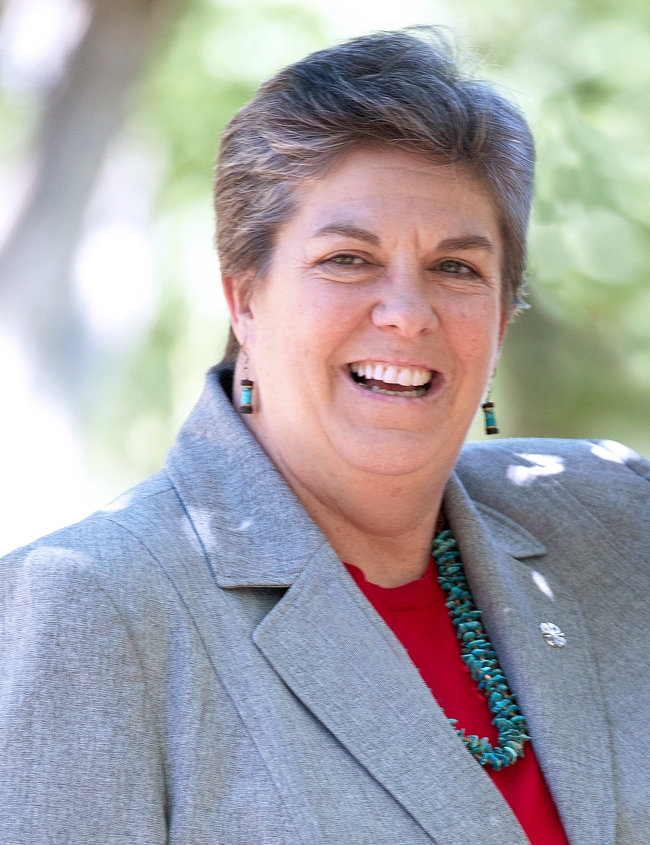
The U.S. Department of Agriculture (USDA) today (Jan. 25) announced plenary speakers for the 2022 Agricultural Outlook Forum, themed “New Paths to Sustainability and Productivity Growth” to be held virtually Feb. 24–25, 2022.
The opening plenary session will feature a fireside chat between Secretary of Agriculture Tom Vilsack and Elizabeth Economy, senior advisor to the Secretary of Commerce. Secretary Vilsack and Economy will discuss U.S.-China agricultural trade relations and prospects for the Chinese agriculture market.
The Secretary's discussion will be followed by a panel titled “Growing Market Opportunities for Climate Smart, Sustainable Agriculture Systems,” which will bring together sector leaders to discuss how climate smart, sustainable production practices can generate both environmental and economic returns, while still meeting the needs of consumers.
Speakers at the plenary panel include:
- David Allen, VP of Sustainability at PepsiCo Foods;
- Glenda Humiston, Vice President, Agriculture & Natural Resources at University of California;
- Mike McCloskey, Co-Founder and CEO of Select Milk Producers;
- Elena Rice, Chief Scientific Officer of Genus, PLC; and
- Emily Skor, CEO, Growth Energy
“The Outlook Forum is USDA's largest event of the year. Being asked by Secretary Vilsack to serve on the opening plenary panel is a significant honor,” said Humiston.
Also, during the Thursday morning session, USDA Chief Economist Seth Meyer will unveil the Department's 2022 outlook for U.S. commodity markets and trade and discuss the U.S. farm income situation.
Along with the plenary session, forum attendees can choose from 30 sessions with more than 90 speakers. The concurrent track sessions and topics supporting this year's theme are: climate mitigation and adaptation, supply chain resilience, commodity outlooks, frontiers in agricultural production and technology and U.S. trade and global markets.
Visit the Agricultural Outlook Forum website to register and read the program at a glance. Follow the conversation at #AgOutlook on USDA's Twitter, Instagram, and Facebook.
Registration to the 2022 Outlook Forum is free but required. Register at https://www.labroots.com/ms/virtual-event/usda-aof-2022.
USDA touches the lives of all Americans each day in so many positive ways. In the Biden-Harris Administration, USDA is transforming America's food system with a greater focus on more resilient local and regional food production, fairer markets for all producers, ensuring access to safe, healthy, and nutritious food in all communities, building new markets and streams of income for farmers and producers using climate smart food and forestry practices, making historic investments in infrastructure and clean energy capabilities in rural America, and committing to equity across the Department by removing systemic barriers and building a workforce more representative of America. To learn more, visit www.usda.gov.

